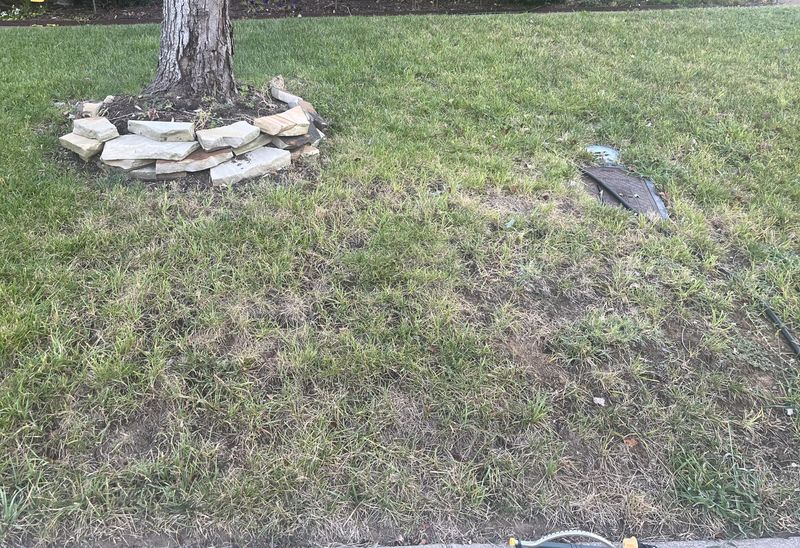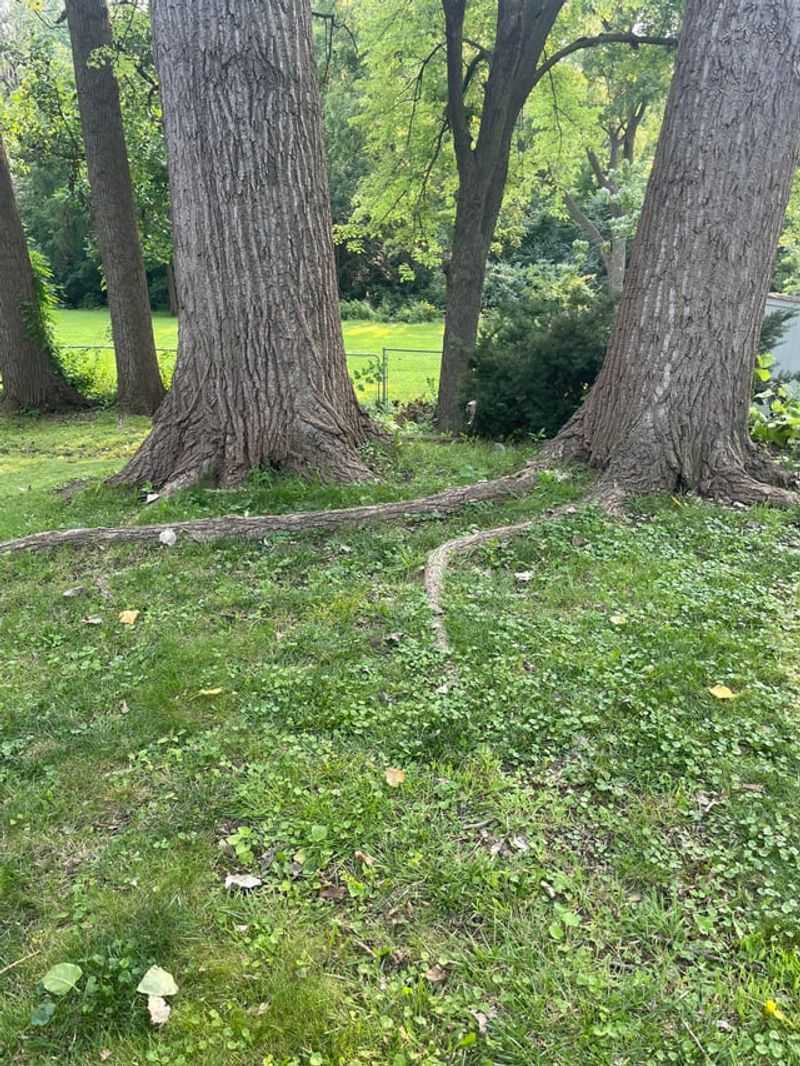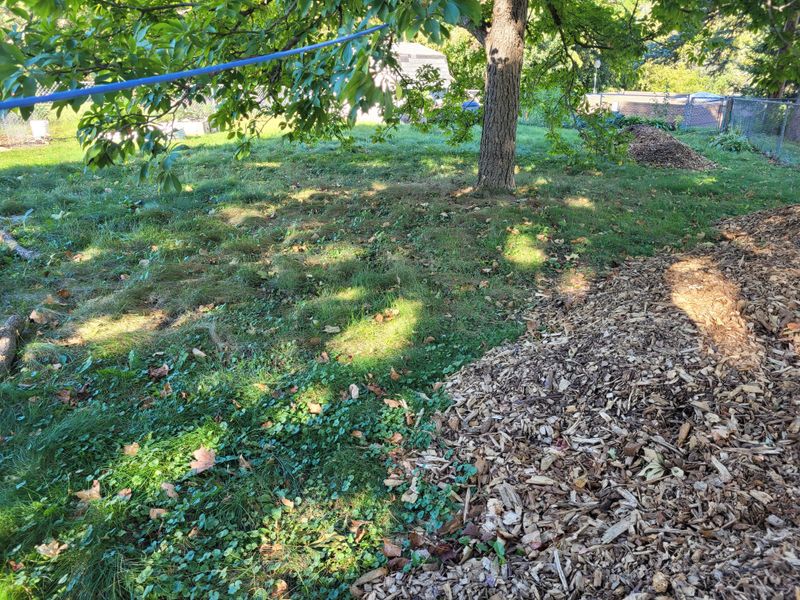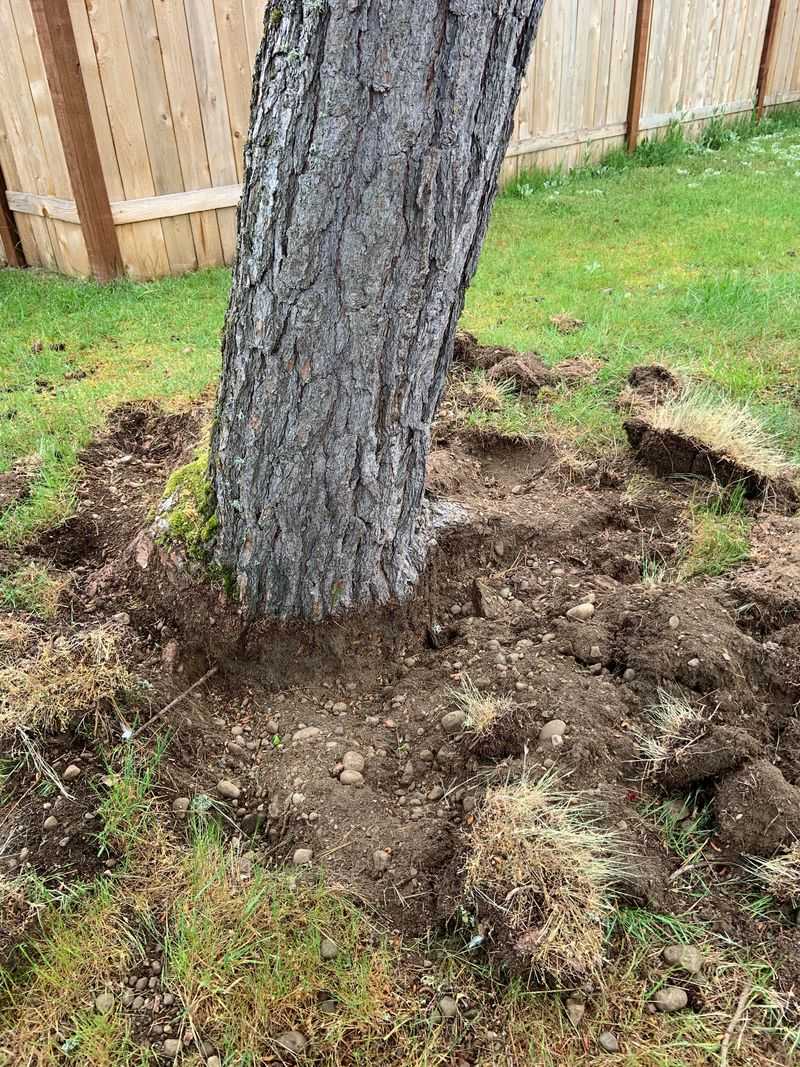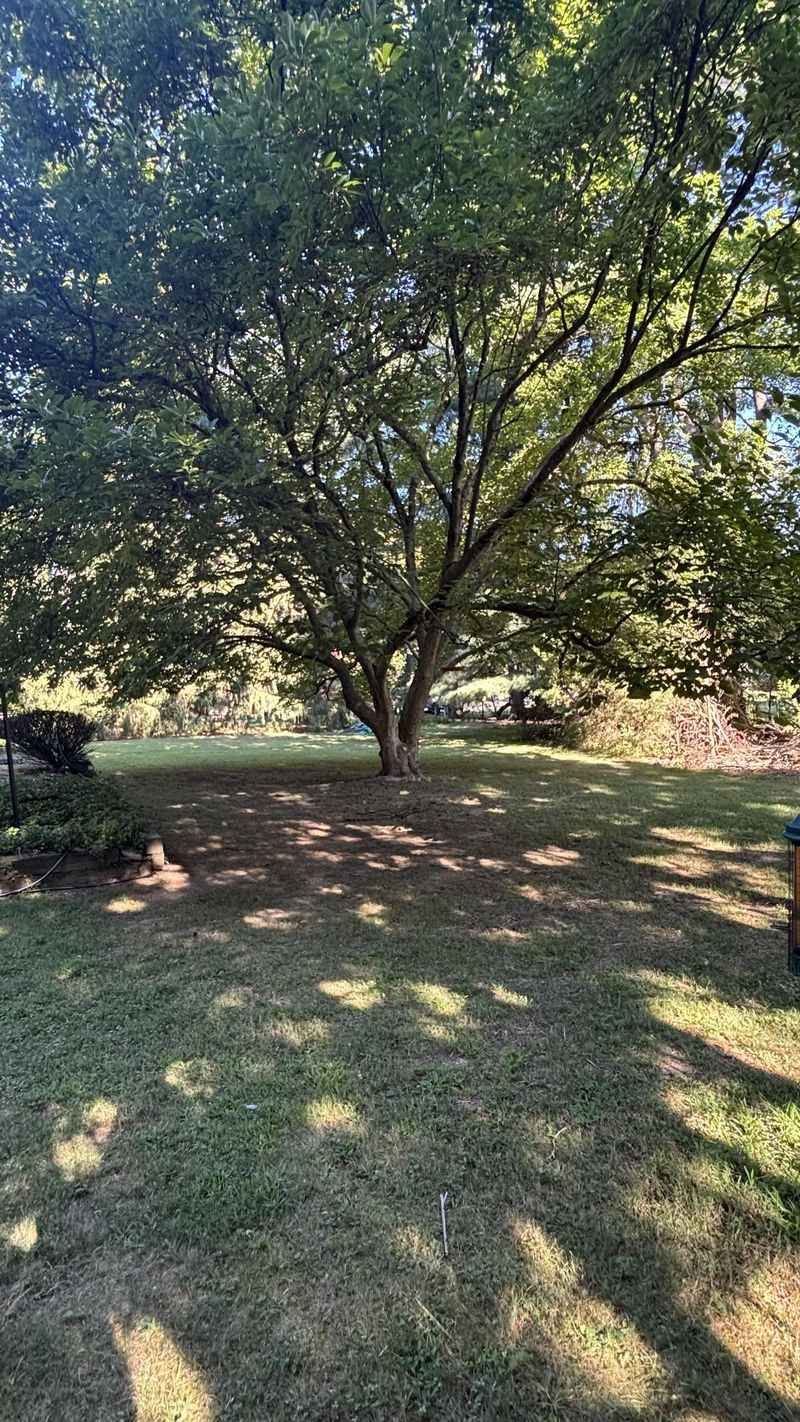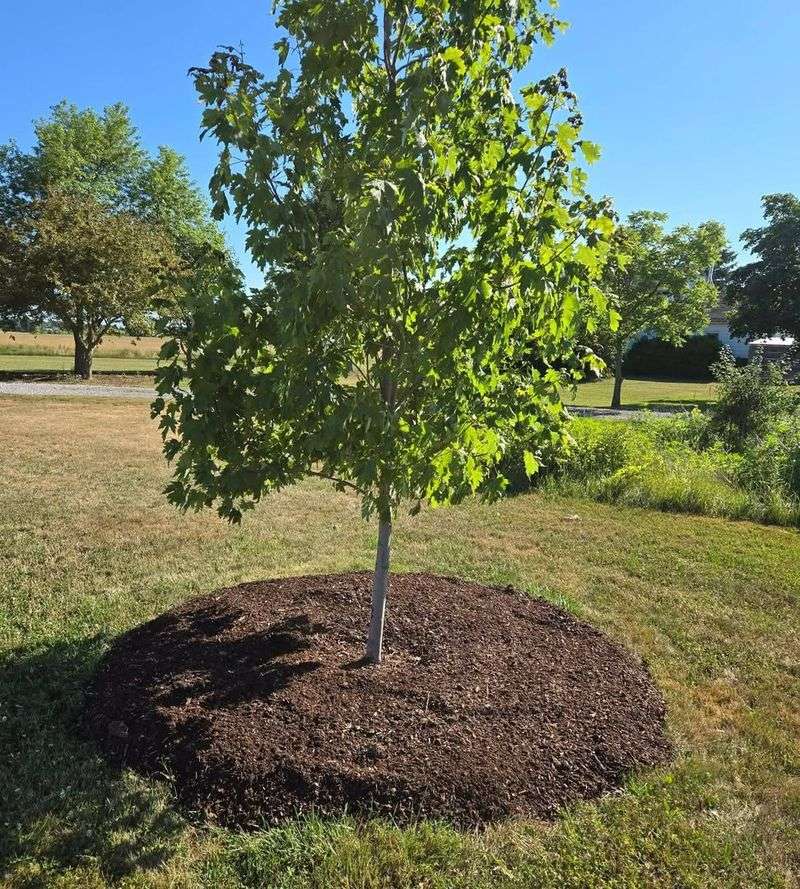Georgia yards can look beautiful until you try getting grass to behave around the base of a tree, and I’ve battled that stubborn bare ring more times than I can count. Trees create their own little world under those branches, and the grass never quite gets what it needs.
Even the toughest varieties struggle once the roots start competing. Understanding why it happens makes the whole situation a lot less confusing.
1. Tree Roots Compete for Water and Nutrients
Roots from mature trees spread far and wide, hogging moisture and food that grass desperately needs. In Georgia’s clay-heavy soil, this competition becomes even fiercer during hot summers.
Trees have deeper, stronger root systems that basically win every battle against shallow grass roots. Your lawn simply can’t keep up when a big oak or pine is pulling resources from the same area.
Consider planting shade-tolerant ground covers instead of fighting nature’s design.
2. Dense Shade Blocks Sunlight
Most grass types need at least four to six hours of direct sunlight daily to stay healthy and green. When towering trees create heavy shade, your lawn literally starves for light.
Georgia homeowners often plant sun-loving grasses like Bermuda, which struggle mightily under tree canopies. Without adequate sunlight, grass blades grow thin, weak, and eventually give up altogether.
Switching to shade-tolerant varieties like St. Augustine can make a noticeable difference in problem areas.
3. Fallen Leaves Smother Grass
Leaves piling up under trees create a suffocating blanket that prevents air and light from reaching grass below. In Georgia, where deciduous trees drop loads of foliage each fall, this becomes a serious problem.
That matted layer also traps moisture, encouraging fungal diseases and rot. Grass needs to breathe and photosynthesize, but a thick leaf covering makes both impossible.
Regular raking or mulching leaves into smaller pieces helps your lawn survive autumn’s challenges.
4. Acidic Soil from Pine Needles
Pine trees are everywhere across Georgia, and they drop needles constantly throughout the year. As these needles break down, they gradually make the soil more acidic than most grass varieties prefer.
Grass struggles in highly acidic conditions because it affects nutrient availability in the soil. Your lawn can’t absorb what it needs when pH levels drop too low.
Testing your soil and adding lime when necessary helps balance acidity and gives grass a fighting chance beneath pines.
5. Compacted Soil from Foot Traffic
People naturally walk around trees, creating paths that pack down the soil over time. Georgia’s clay soil compacts especially easily, making it nearly impossible for grass roots to penetrate.
Compacted ground also prevents water from soaking in properly, causing runoff instead of absorption. Grass roots need loose, airy soil to spread and establish themselves successfully.
Aerating the soil around trees and adding organic matter can gradually improve conditions and encourage healthier growth patterns.
6. Allelopathic Chemicals from Certain Trees
Some trees, like black walnuts and certain pines, release natural chemicals that actively prevent other plants from growing nearby. It’s nature’s way of reducing competition, but it’s frustrating for Georgia homeowners wanting lush lawns.
These allelopathic compounds wash into the soil with rain, creating a zone where grass and many other plants simply won’t survive. You’re not doing anything wrong—the tree is chemically defending its territory.
Accepting mulch beds instead of grass may be your best solution here.
7. Shallow Root Exposure and Physical Barriers
Large surface roots create bumps and ridges that make growing grass nearly impossible. In Georgia, mature oaks and maples often develop these gnarly exposed roots that rise above ground level.
Grass can’t establish on top of hard wood, and mowing becomes a nightmare when roots stick up everywhere. Soil also erodes away from these roots during heavy rains, common in Georgia’s climate.
Building attractive mulch rings around problem trees protects roots while eliminating the frustration of patchy grass coverage.


